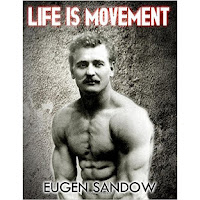But just a few words about Tommy first just for context so I can make a few significant points, and highlight the lessons that I derived from the interview. Tommy Kono was probably pound for pound one of the greatest Olympic lifters who ever walked the earth. He may have been the best Olympic lifter that the United States has ever produced. He competed in an era where weight training and good health went hand and hand. It was a wonderful era for lifting beside steroids were all but unheard of up to a point, rather emphasis was placed on good old fashioned hard work and sensible training. Tommy was lucky enough to train at one point under the coaching of Bob Hoffman, considered the "Father of American Weightlifting". Tommy Kono in this regard in my opinion could only be compared in greatness to the legendary Paul Anderson, considered by many strength historians to be the strongest man who ever lived. Paul too was competing around that time as a super heavyweight for the United States.Tommy actually won numerous titles, Olympic medals in four different weight classes and was nominated by a number of hall of fame organizations. Not only that, Tommy was no one trick pony because as was more common in that era, also competed as a bodybuilder and took numerous titles.
I want to emphasize this point and come back to it in a bit since there is a valuable lesson here too. Sadly Tommy passed away in 2016 at the age of 85. So since in Bob Whelan's interview Tommy stated he was 84 years old, I surmised Bob's interview must have been a year or so before his passing give or take. So it was very fortunate indeed that the interview took place before Tommy passed. Again, it was an excellent interview full of excellent training info and I highly recommend spending 45 minutes or so to take it all jn. Which leads me to the purpose of this article. Bob's questions to Tommy and his forthcoming answers got me thinking about a few key insights I would like to share. The lessons of the past to the present so to speak. So for what it is worth, here I go.
1. Tommy stated that as a youth he was not very strong. He in fact described himself as skinny and sickly. This kind of brings me back to my own youth and the reasons I started lifting. Yeah I was skinny and weak. I was not sick, but I knew deep down that what I was doing was HELPING ME BE HEALTHIER. I was making my body stronger and healthier because strength was equated with health. That is why a popular bodybuilding magazine was titled "Strength and Health". Tommy made himself stronger and healthier, although he took it to a way higher level. And he did it clean. No drugs. Tommy stated that he was able to successfully complete against the Russians even though they were doing steroids and he was not.


